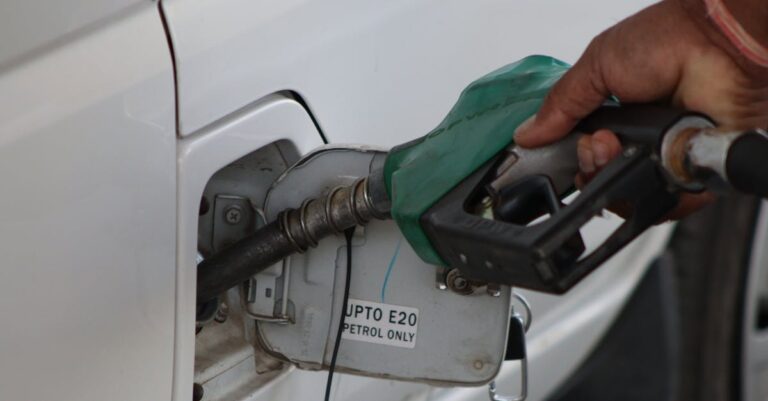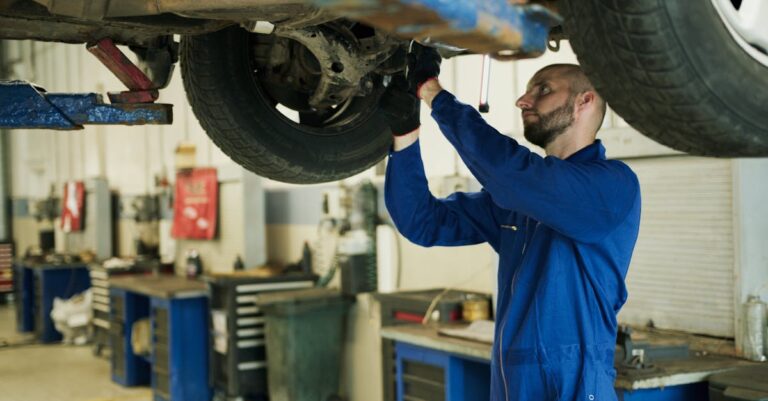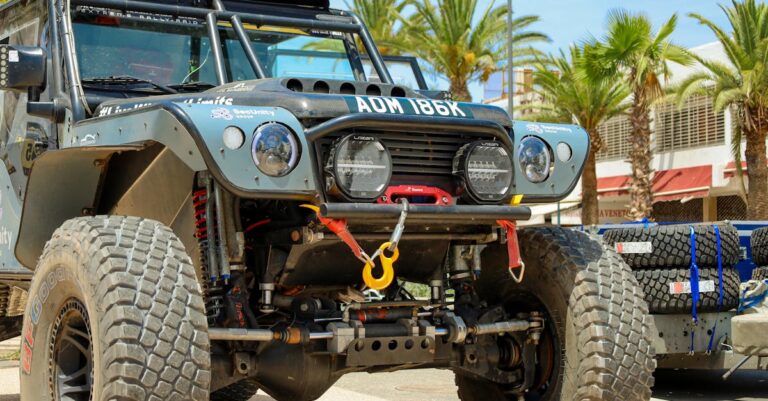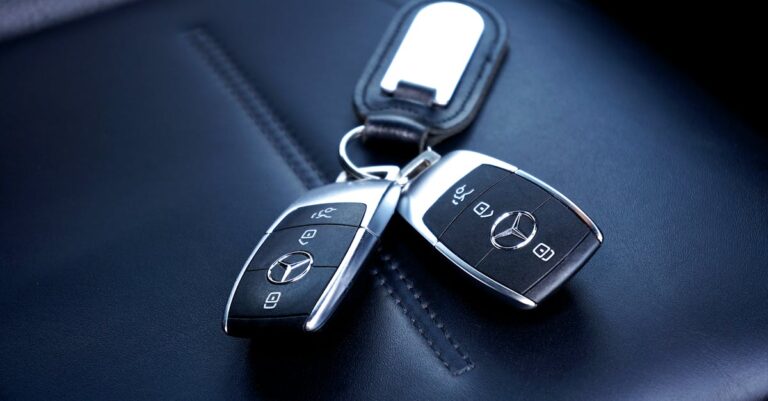- Mastering Your Drive: Using Cruise Control Effectively
- What Exactly Is Cruise Control Anyway?
- Why Bother Using Cruise Control? The Big Benefits
- Knowing When to Engage: The Ideal Cruise Control Conditions
- Danger Zones: When Not to Use Cruise Control
- Getting Hands On: How to Use Standard Cruise Control
- The Next Level: Understanding Adaptive Cruise Control (ACC)
- Staying Safe While Cruising
- Keeping Your System Happy: Cruise Control Care
- Conclusion: Cruise Control as Your Co Pilot
- Frequently Asked Questions (FAQs)
Mastering Your Drive: Using Cruise Control Effectively
Ah, cruise control. That magical button (or stalk) that promises effortless highway miles. For many drivers, it’s either a beloved companion on long road trips or a mysterious feature they never quite figured out how to use properly. But let me tell you, understanding how to use cruise control effectively can seriously transform your driving experience, making it more relaxed, economical, and even safer – when used correctly, of course! Think of it less like a gimmick and more like a helpful co pilot, ready to take over the monotonous task of maintaining speed so you can focus on the bigger picture of driving.
Maybe you’ve dabbled with it, setting it on a deserted stretch of highway only to quickly disengage it when traffic appeared. Or perhaps you’re a seasoned user but wonder if you’re truly getting the most out of it. Wherever you fall on that spectrum, we’re about to dive deep. We’ll explore what cruise control actually is, the surprising benefits it offers, precisely when (and crucially, when not) to use it, and how to operate both standard and the newer, fancier adaptive systems. Ready to unlock the full potential of this often underutilized feature? Let’s hit the road!
What Exactly Is Cruise Control Anyway?
Before we get into the nitty gritty of using it, let’s quickly clarify what we’re talking about. At its heart, cruise control is a system that automatically manages the speed of your vehicle. You, the driver, set a desired speed, and the car’s internal wizardry takes over the throttle to maintain that speed without you needing to keep your foot constantly pressed on the accelerator pedal. Simple concept, right? But there’s a bit more going on behind the scenes.
The Basic Concept: Setting and Forgetting (Sort Of)
Imagine you’re on a long, straight highway. You decide you want to travel at a steady 65 miles per hour. Instead of constantly micro managing your foot pressure on the gas pedal – pressing a little harder uphill, easing off downhill, adjusting for slight variations – you activate the cruise control and set the speed to 65. The car then aims to hold that speed precisely. It’s like telling your car, “Hey, stick to this speed until I tell you otherwise.” However, the “forgetting” part is where we need to be careful. It manages speed, not steering, braking (in standard systems), or awareness. You still need to be fully engaged in the driving process.
How Does It Work Under the Hood? (A Simple Look)
Without getting overly technical (no engineering degree required here!), standard cruise control typically monitors your vehicle’s speed using sensors (often linked to the driveshaft or wheel speed sensors). When you set a speed, a control unit (like a small computer) remembers it. This unit then communicates with an actuator connected to the throttle. If your car starts to slow down (like going uphill), the control unit tells the actuator to open the throttle slightly, giving it more gas. If the car starts to speed up (like going downhill), it eases off the throttle. Think of it as an electronic foot constantly making tiny adjustments to the gas pedal to keep your speed locked in. It’s a feedback loop: monitor speed, compare to set speed, adjust throttle, repeat. Modern systems are incredibly sophisticated, making these adjustments smoothly and efficiently.
Why Bother Using Cruise Control? The Big Benefits
Okay, so it maintains speed. Big deal? Actually, yes! Using cruise control effectively offers some tangible advantages that make it well worth mastering.
Kicking Back (Safely): Reducing Driver Fatigue
Let’s be honest, holding your foot in the exact same position on the accelerator for hours on end can be tiring. Your leg gets stiff, your ankle might ache, and the constant mental effort of maintaining a precise speed adds to overall driver fatigue. Cruise control takes over that specific task. By allowing you to relax your right foot (keeping it ready near the pedals, of course!), it significantly reduces physical strain on long journeys. Less physical strain often translates to less mental fatigue, helping you stay more alert and focused on observing traffic, road signs, and potential hazards. Imagine arriving at your destination feeling a bit less like you’ve run a marathon with your right leg!
Saving Pennies at the Pump: Fuel Efficiency Gains
This is a big one for many drivers. Your engine is most efficient when it’s operating at a steady, consistent speed. Human drivers, even the smoothest ones, tend to make small, almost imperceptible accelerations and decelerations. We speed up a tiny bit, then ease off, then speed up again. Each little acceleration burns extra fuel. Cruise control eliminates this fluctuation. By maintaining a truly constant speed, it avoids unnecessary acceleration, leading to smoother engine operation and, consequently, better fuel economy. Think of it like avoiding constant stop start sprints; a steady jog is much more efficient. While the savings on a single trip might seem small, they can really add up over the lifetime of your car, especially with today’s gas prices!
Avoiding Those Pesky Tickets: Maintaining Consistent Speed
Ever been cruising along, lost in thought or conversation, only to glance down and realize you’ve crept 10 mph over the speed limit? It happens to the best of us! Speed limits can change, gentle downhill slopes can trick you, and simple inattention can lead to unintentional speeding. Cruise control is your best friend in combating “speed creep.” Once you set it to the legal limit (or your desired speed within that limit), it diligently keeps you there. This drastically reduces the risk of accidentally exceeding the speed limit and attracting unwanted attention from law enforcement. It’s a simple tool for staying compliant and avoiding those costly speeding tickets and potential points on your license.
Knowing When to Engage: The Ideal Cruise Control Conditions
Cruise control is fantastic, but it’s not suitable for every driving situation. Knowing when to use it is just as important as knowing how.
Long Hauls and Open Highways: The Sweet Spot
This is where cruise control truly shines. Long stretches of relatively straight, multi lane highways or interstates with light to moderate traffic are the perfect environment. When you can see far ahead, traffic is flowing smoothly, and there are minimal reasons to constantly adjust your speed, engaging cruise control allows you to reap all the benefits: reduced fatigue, better fuel economy, and consistent speed. Think wide open roads, clear visibility, and predictable traffic flow – that’s prime cruise control territory.
Light Traffic Flow: When It Can Still Work
You don’t necessarily need a completely empty road. Cruise control can still be effective in light, steady traffic where cars are maintaining a consistent speed and there’s ample space between vehicles. If you find yourself in a pack of cars all doing roughly the same speed on the highway, setting your cruise control can help you blend in smoothly without constant pedal work. However, you need to be extra vigilant and ready to disengage it quickly if traffic patterns change or someone brakes unexpectedly ahead.
Danger Zones: When Not to Use Cruise Control
Using cruise control in the wrong conditions isn’t just inefficient; it can be downright dangerous. Here’s when you should definitely keep your foot in charge.
Heavy Traffic or Stop and Go Situations
This should be obvious, but it bears repeating. Cruise control is designed to maintain a *set* speed. In heavy, unpredictable, or stop and go traffic, you need constant, manual control over your acceleration and braking. Using cruise control here would lead to constant disengagement, re engagement, or worse, potentially delaying your reaction time if the car ahead suddenly brakes hard. Standard cruise control won’t brake for you! Keep it off in congested areas.
Slippery When Wet (or Icy): Bad Weather Warnings
Never use standard cruise control in rain, snow, ice, or even on roads that might be slick from recent precipitation. Why? If your car starts to hydroplane or skid, cruise control might actually try to *maintain* speed or even accelerate slightly to counteract the perceived slowing, making the skid worse and potentially causing a complete loss of control. You need to be able to reduce power instantly and manually control the throttle and brakes in slippery conditions. Your safety depends on having full, immediate control.
Winding Roads and Hilly Terrain
Cruise control is designed for steady speeds on relatively straight paths. On sharply winding roads, you need to adjust your speed frequently for curves. Cruise control won’t anticipate these curves and slow down appropriately. Similarly, on very steep hills (both up and down), standard cruise control can struggle. Going uphill, it might cause the engine to strain or the transmission to hunt for gears excessively. Going downhill, it only eases off the throttle; it doesn’t apply the brakes (unless you have a very advanced system), potentially allowing the car to gain excessive speed. You need manual control to navigate these terrains safely and smoothly.
Urban Exploration: City Driving No Nos
Driving in towns and cities involves constant changes: traffic lights, pedestrians, cyclists, intersections, frequent speed limit changes, and vehicles pulling in and out. It’s simply not practical or safe to use cruise control in these environments. You need to be constantly adjusting your speed and ready to react instantly to a myriad of potential hazards. Save the cruise control for the open road.
Getting Hands On: How to Use Standard Cruise Control
Alright, let’s get practical. Using standard cruise control is usually straightforward once you know the buttons.
Finding the Buttons: Your Steering Wheel Controls
Most modern cars have cruise control buttons conveniently located on the steering wheel or on a stalk attached to the steering column. Look for buttons typically labeled:
- ON/OFF: Turns the main cruise control system power on or off.
- SET: Sets the current speed as the target speed. Often combined with a “minus” or “coast” function.
- RES (Resume): Returns the car to the previously set speed after braking or cancelling. Often combined with a “plus” or “accelerate” function.
- CANCEL: Temporarily disengages cruise control without turning the system off. Tapping the brake pedal usually does the same thing.
- +/- or ACCEL/COAST: Buttons to incrementally increase or decrease the set speed.
Check your car’s manual to confirm the exact location and labels for your specific vehicle.
Engaging the System: Setting Your Speed
Here’s the typical process:
- Press the ON/OFF button to turn the system on (a light often illuminates on your dashboard).
- Accelerate manually to your desired cruising speed.
- Press the SET button. Your car will now maintain this speed.
- You can now take your foot off the accelerator (but keep it nearby!).
Making Adjustments: Increasing Decreasing Speed
Need to fine tune your speed? No need to disengage.
- To increase speed slightly, tap or hold the + or ACCEL button. Each tap might increase speed by 1 mph (check your manual).
- To decrease speed slightly, tap or hold the – or COAST button.
The car will smoothly adjust to the new set speed.
Taking Back Control: Cancelling and Resuming
You’ll frequently need to temporarily disengage cruise control.
- Tap the brake pedal: This is the most common and intuitive way. Cruise control immediately disengages, but the system stays on, remembering your set speed.
- Tap the clutch pedal (manual transmission): Same effect as tapping the brake.
- Press the CANCEL button: This also disengages cruise control while keeping the system active and remembering the speed.
Once the situation clears (e.g., the car you slowed down for moves away) and you want to return to your previously set speed, simply press the RES (Resume) button. The car will automatically accelerate back up to that speed. If you press the main ON/OFF button, it turns the whole system off, forgetting the set speed.
The Next Level: Understanding Adaptive Cruise Control (ACC)
Many newer vehicles come equipped with Adaptive Cruise Control (ACC), which is a significant upgrade from the standard system.
What Makes ACC Different? The Smart Sensor Advantage
ACC takes cruise control a giant leap forward. It uses sensors (like radar or cameras, often mounted in the front grille or near the rearview mirror) to detect vehicles ahead of you in the same lane. Like standard cruise control, you set a desired maximum speed. However, ACC will also automatically adjust your speed to maintain a pre set following distance from the vehicle in front. If the car ahead slows down, your car will automatically slow down too, even applying the brakes if necessary (within certain limits). If the car ahead speeds up or moves out of the lane, your car will accelerate back up to your set speed. Some advanced ACC systems even work in stop and go traffic, bringing the car to a complete stop and resuming automatically.
Setting Follow Distance: Customizing Your Bubble
A key feature of ACC is the ability to adjust the following distance – the gap your car maintains behind the vehicle ahead. Usually, there are buttons (often depicting cars with distance lines between them) that allow you to choose between several settings, typically ranging from a shorter following distance to a longer one. It’s generally recommended to use a longer following distance, especially at higher speeds or in less than ideal conditions, to allow for more reaction time. Experiment with the settings to find what feels comfortable and safe for the current driving conditions, but always prioritize safety over closeness.
Staying Safe While Cruising
Whether standard or adaptive, cruise control is a driver assist feature, not a replacement for an attentive driver.
Always Stay Alert: Cruise Control Isnt Autopilot!
This cannot be stressed enough. Even with the most advanced ACC, you are still driving the car. Your eyes need to be on the road, your hands should be on the wheel (or ready to grab it instantly), and your mind needs to be engaged. Cruise control won’t see potholes, debris on the road, animals darting out, construction zones requiring lane changes, or emergency vehicles approaching. It won’t anticipate erratic behavior from other drivers. Complacency is the enemy. Don’t let the convenience lull you into a false sense of security. Stay focused, scan your surroundings, and be prepared to intervene at any moment.
Be Ready to Brake: Anticipating Changes
Always keep your foot hovering near the brake pedal, even when cruise control is active. This allows for the quickest possible reaction time if you need to slow down or stop suddenly. Standard cruise control requires you to brake manually. While ACC can brake automatically, it might not react as quickly or as aggressively as you would in an emergency situation. Anticipate potential slowdowns – brake lights ahead, merging traffic, upcoming curves – and be ready to override the system by braking yourself.
Keeping Your System Happy: Cruise Control Care
Generally, cruise control systems are quite reliable and don’t require specific maintenance separate from your regular vehicle servicing. However, if you notice any issues – the system won’t engage, it disengages unexpectedly, it doesn’t hold speed accurately, or warning lights appear – get it checked by a qualified mechanic. Problems could stem from various sources, including faulty buttons, brake light switch issues, sensor problems (especially with ACC), vacuum leaks (in older systems), or electronic control unit glitches. Don’t ignore problems; a malfunctioning cruise control system could be unreliable or even unsafe.
Conclusion: Cruise Control as Your Co Pilot
So there you have it! Cruise control, when used effectively and in the right conditions, is far more than just a luxury feature. It’s a practical tool that can genuinely enhance your driving experience. By reducing fatigue on long trips, potentially saving you money on fuel, and helping you maintain a consistent, legal speed, it acts like a reliable co pilot handling one specific task. Remember the key takeaways: use it primarily on open highways with light traffic, never use standard systems in bad weather or heavy congestion, always stay alert and ready to take over, and understand the difference if you have the more advanced Adaptive Cruise Control. Master its use, respect its limitations, and enjoy a smoother, potentially more economical journey.
Frequently Asked Questions (FAQs)
Q1: Can using cruise control really save gas?
A: Yes, it generally can. By maintaining a consistent speed and avoiding the small, frequent accelerations and decelerations common in manual speed control, cruise control allows the engine to operate more efficiently. The smoother operation typically leads to better fuel economy, especially during highway driving. Savings vary depending on driving style, terrain, and traffic, but consistent use under the right conditions often results in noticeable fuel conservation over time.
Q2: Is it safe to use cruise control in the rain?
A: It is strongly recommended not to use standard cruise control in the rain or on any wet or slippery road surface. If your tires lose traction (hydroplane), the cruise control system might try to maintain speed or even accelerate, potentially worsening the skid and leading to a loss of control. You need full manual control of the throttle and brakes in such conditions. While some very advanced Adaptive Cruise Control systems might function in light rain, it’s always safest to err on the side of caution and avoid using any cruise control system when roads are slick.
Q3: Whats the difference between cruise control and adaptive cruise control?
A: Standard cruise control maintains a speed set by the driver. It doesn’t react to vehicles ahead; you must manually brake or disengage it. Adaptive Cruise Control (ACC) also maintains a set speed but uses sensors (like radar or cameras) to detect vehicles ahead. ACC automatically adjusts your speed to maintain a pre set following distance behind the vehicle in front, slowing down and sometimes even braking if necessary, and then resuming the set speed when the way is clear.
Q4: Can I use cruise control in hilly areas?
A: It’s generally not recommended, especially with standard cruise control. On steep uphills, the system might cause the engine to work too hard or the transmission to shift excessively. On steep downhills, standard cruise control only eases off the gas – it doesn’t brake. This can allow the vehicle to gain excessive speed, potentially becoming unsafe. You typically need manual control to manage speed effectively and safely in very hilly terrain using engine braking or manual brake application.
Q5: What should I do if my cruise control stops working?
A: First, ensure you haven’t accidentally pressed the main OFF button instead of CANCEL. Check if any dashboard warning lights related to cruise control or other systems (like traction control or engine checks) are illuminated, as these can sometimes disable cruise control. A common culprit is a faulty brake light switch, as the system needs to know when you brake. If basic checks don’t resolve it, it’s best to have the system inspected by a qualified mechanic to diagnose and repair the issue safely.









